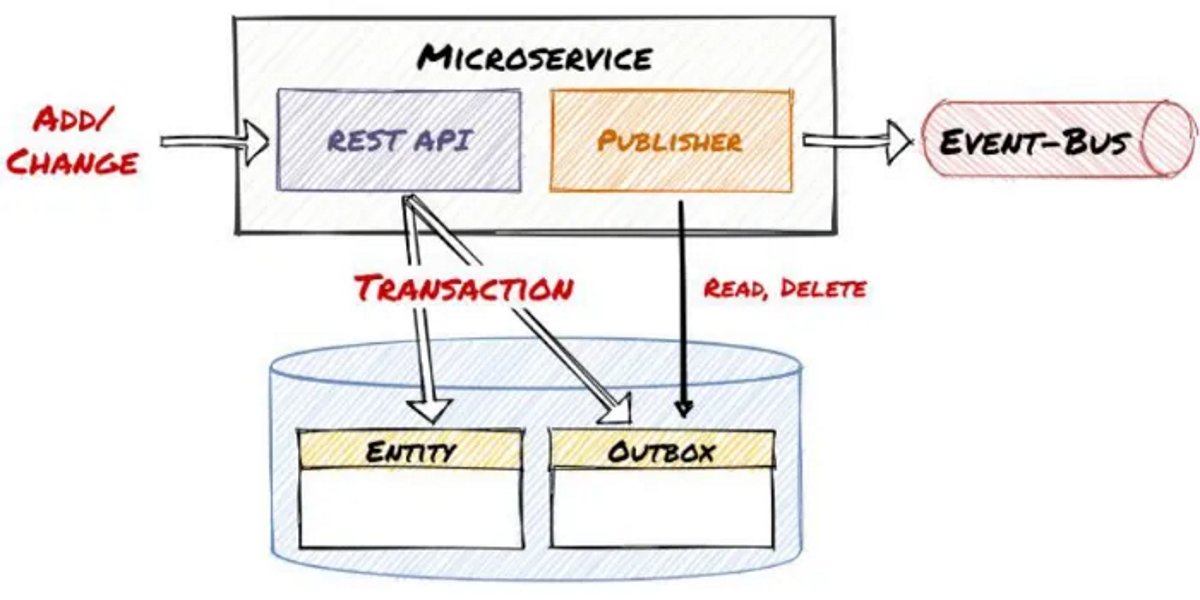
The Outbox pattern is a design approach used in microservices architecture to ensure reliable messaging between microservices. In a microservices-based system,
different services often need to communicate with each other to exchange data and trigger actions. Messaging is a common way to facilitate this communication.
The Outbox pattern addresses a common challenge in messaging systems: ensuring that a message is delivered exactly once, even in the face of failures and
system crashes. Here's how it typically works:
Database Changes
When a microservice needs to send a message to another microservice, it doesn't send the message directly. Instead, it records the message in its own database as part of a transactional operation.
Outbox Table
The microservice maintains an "Outbox" table in its database, where it stores messages to be sent. This table includes essential information about the message, such as the message content, destination, and a status flag.
Transaction Commit
The message is recorded in the Outbox table as part of the same database transaction that makes the changes necessitating the message. This ensures that the message and the database changes are either both committed or both rolled back.
Message Dispatcher
A separate component, often referred to as a "Message Dispatcher" or "Event Processor," monitors the Outbox table for pending messages. It picks up unsent messages and sends them to their respective destinations, typically using a messaging system like RabbitMQ, Kafka, or similar technologies.
Idempotent Handling
To ensure idempotent message processing, the receiving microservice should be designed to handle the same message multiple times without causing unintended side effects. Deduplication mechanisms can also be implemented to prevent processing the same message multiple times.
Summary
By using the Outbox pattern, microservices can achieve reliable messaging and maintain data consistency across the system, even in the presence of failures. This pattern is particularly useful in distributed systems where maintaining message reliability and order is essential.